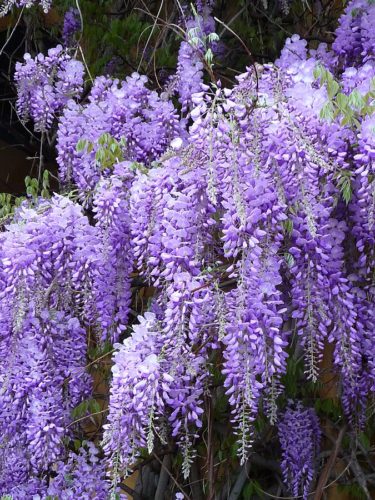Wisteria, belongs to the woody twining vines, and are native to the United States and (South) Asia.
You are viewing the mobile-adapted version of the page.
The one for tablets, laptop and desktop also provides general information, such as origin, toxicity and cultivation.
Wisteria – (Wisteria), belongs to the woody twining vines and are native to the United States and (South) Asia. Wisterias are hardy, strong plants and can climb up to 20 meters in height with a girth of over 10 meters. Wisterias climb by twining their stems around any available support. Wisteria floribunda (Japanese wisteria) twines clockwise, while Wisteria sinensis (Chinese wisteria) twines counterclockwise. To climb, wisteria needs support: this could be a pergola, or a tree or a drainpipe along the facade. The support must be sturdy because wisteria grow into hefty climbers with accompanying weight.
Wisterias are not picky about soil, but they do best in fertile, well-drained, slightly moist soil. Wisterias bind nitrogen from the soil and thus do not need nitrogen-rich fertilizer. Phosphate and potassium are welcome, though.
Wisteria blooms on the beginning of side branches formed the previous year. Spring pruning back the many offshoots prevents the flower spikes from being hidden behind exuberant greenery.
Bugs
Brown substantial scale insects on the branches: Wisteria scale (Eulecanium excrescens). A true infestation of scale insects can lead to wisteria mortality.
Fungi & diseases
Growth remains stunted, at the base of the plant a delicate membrane of fungal threads forms behind the bark. Brown mushrooms follow in the fall: honey fungus (Armillaria mellea).
Leaves wilt, yellow and die. Twigs wither because the roots are affected by root rot: Phytophthora.
Other
The wisteria does not bloom: too much nitrogen fertilizer.
Some species take years for the climber to mature and flower.
Sometimes after years of growth and flowering, the adhesion between the grafted parts (rootstock + wisteria) can cause problems, causing the climber to die.
Of Wisterias that are in large pots, excess water in the pot can cause the roots to rot.

